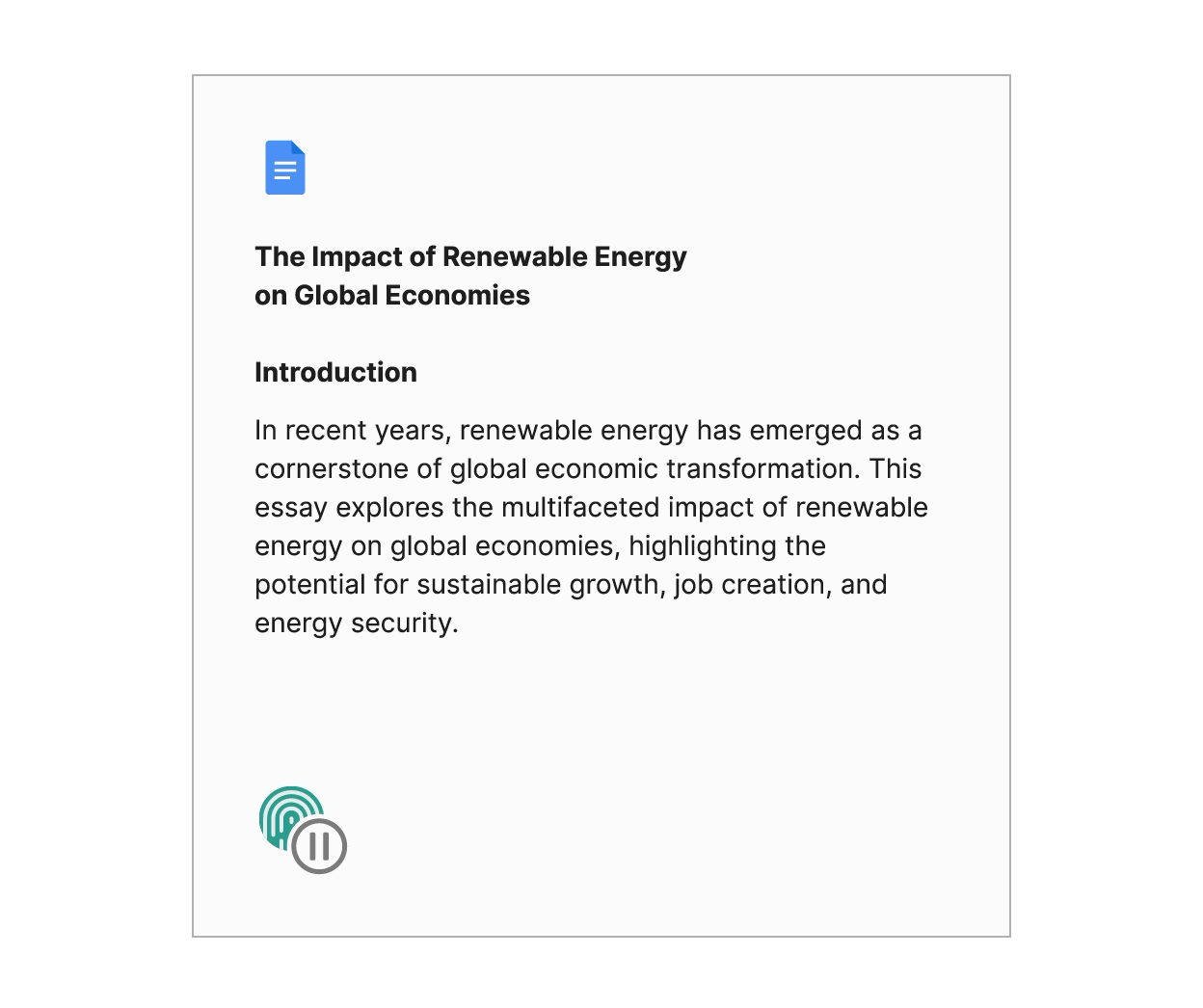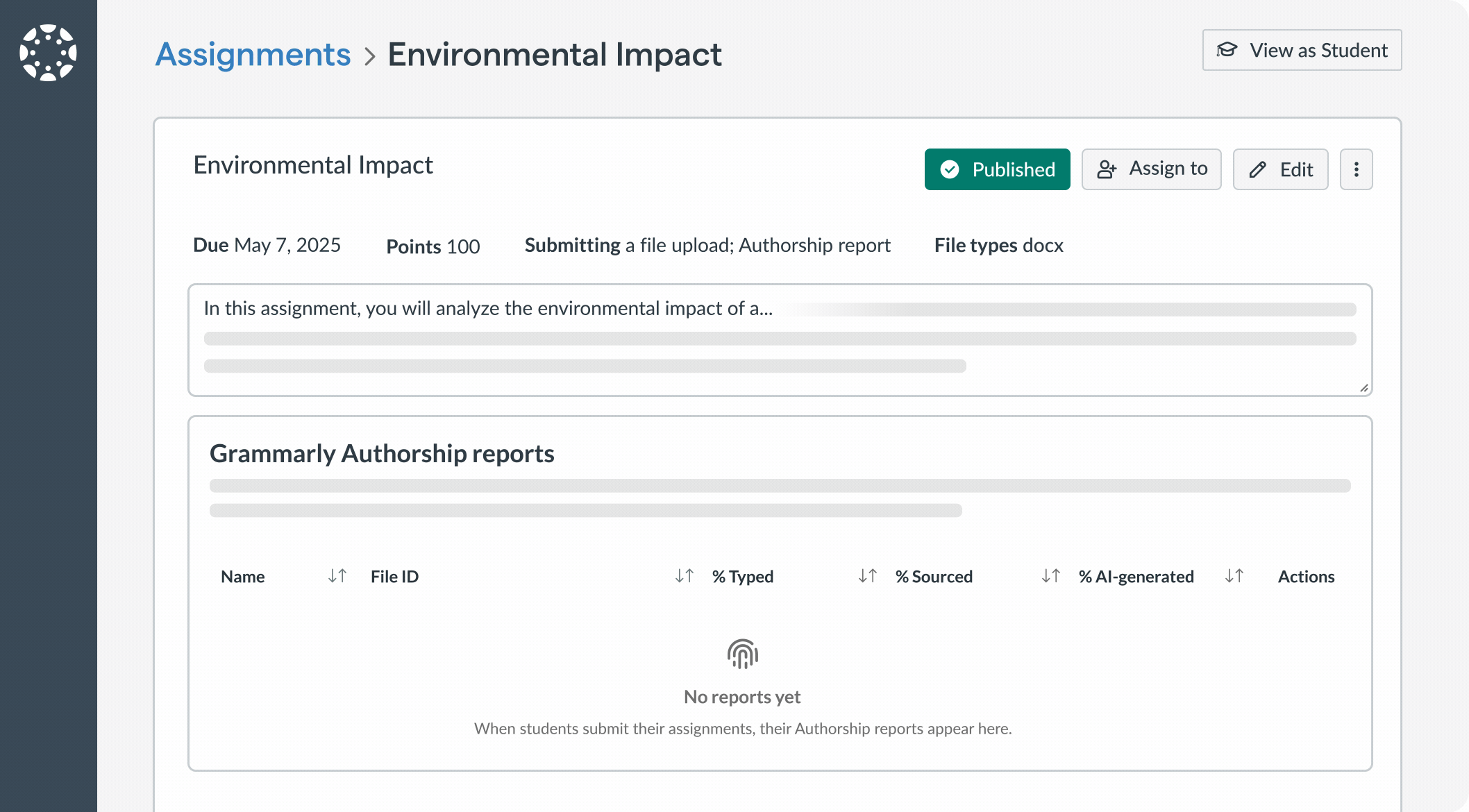Introduction
“Next Big Things in Tech is both a snapshot of the most interesting tech of the moment and a crystal ball that predicts the next several years,” says Brendan Vaughan, editor-in-chief of Fast Company. “We’re excited to share this list with our readers, and we congratulate the winners for their vision and innovation.”
The challenge: AI, integrity, and trust in higher education
AI has changed how students write and how instructors assess learning. Detection-only approaches are imperfect and can produce false positives that erode trust, while many institutions are still refining AI use policies. What’s been missing is a student-first, transparency-forward way to facilitate constructive conversations about when and how AI is used in the writing process.
How Grammarly Authorship works
Authorship makes it easy for students to show their work in the AI era. Rather than attempting to “detect” AI, Authorship acts as a process tracker that categorizes text as human-written, AI-generated, AI-modified, or pasted. It attributes text from over 500,000 apps and websites, and offers multiple ways to view and share findings: an analytical breakdown, a full color-coded report, and an authoring playback that shows how text appeared over time.
Unlike other solutions that sprung up after genAI hit the market, Authorship is built for both instructors and students: Students have to turn on Authorship and can see their text attributed and process before they submit to their instructors. However, they can’t modify the reports that are shared. Instructors will see high-level text source data and a full replay of the student’s process. Thanks to our new Canvas integration, instructors can easily require Authorship reports be submitted and review attribution data easily in one class dashboard.
All with the goal of breeding more transparency and trust between instructors and their students, without the guesswork.

Authorship’s impact across higher education
Since its launch in October 2024, students and instructors have generated nearly 5 million Authorship reports, with an average of ~75,000 reports per week during the academic year (Sept–May).
“Just from introducing Grammarly Authorship, we went from 27 academic integrity violations down to 1. I think that opened up more transparent conversations with students. That’s one of the biggest wins we had here recently—it wasn’t a tool to catch students. It was a tool to make them responsible.”
Dr. Jenny Billings, Division Chair of English, Rowan-Cabarrus Community College
Authorship builds AI literacy by helping students understand when and how to use AI responsibly. These are skills that matter now and will matter even more as AI becomes foundational to academic and workplace writing.
Authorship in Canvas now available
- Instructors can require an Authorship report in Canvas assignment settings
- Students keep writing in Google Docs or Microsoft Word and share their reports to Canvas in a few clicks
- Institutions gain transparency at scale across courses and sections

What’s next
We’ll continue partnering with institutions to strengthen writing transparency and student agency, expand Authorship’s availability where students already write, and support instructors with evidence-based insights that reinforce learning, not policing.

